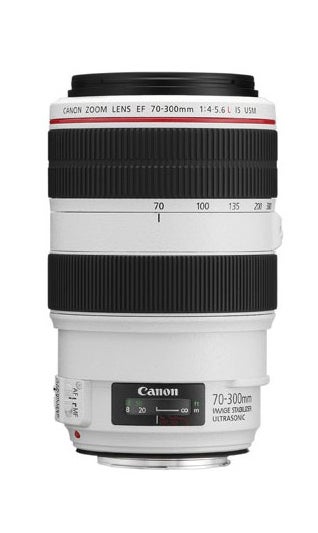Canon EF 70-300mm f/4-5.6L IS USM Review
Canon EF 70-300mm f/4-5.6L IS USM Review
A well-built, pro-spec lens boasting excellent performance

Verdict
Pros
- Ultra-reliable AF and IS systems
Cons
- Poorer sharpness past f/16
Key Specifications
- Review Price: £1140
Canon users are spoilt for choice when it comes to lenses with a 70-300mm zoom range or similar. The full range of options is: the EF 70-300mm f/4-5.6L IS USM (SRP £1,600); EF 70-300mm f/4-5.6 IS USM (SRP £650); EF 75-300mm f/4-5.6 III USM (SRP £350); EF 75-300mm f/4-5.6 III (SRP £300); EF 70-300mm f/4.5-5.6 DO IS USM (SRP £1,700); EF 100-400mm f/4.5-5.6L IS USM (SRP £1,940).
Many of these lenses can be bought for significantly less than their SRPs and the cream-finished L-series 70-300mm zoom on test here is no exception thanks to an on-the-street price of about £1,140. Although this is still a sizeable sum, the lens benefits from a professional-specification design that incorporates a high level of dust and water resistance. It also looks and feels very well built, inspiring confidence as soon as the lens is taken in hand.
The zoom ring is towards the front of the barrel but is easy to reach and offers just the right amount of resistance for finger-tip operation. The manual-focus ring is centrally located and also exhibits perfect resistance and rapid response. The focusing mechanism is genuinely internal, with no external movement to be seen in AF mode. In addition, manual intervention can be used in AF mode at any time.
To the rear of the lens are a focused-distance window (which is so far back as to be obscured by the overhanging pentaprism) and three slider switches that are used to: select either AF/MF or pure MF, activate the IS system and set the IS system’s mode. The sliders are easy to reach but are also recessed to prevent accidental knocks.
Although the lens is rather wide and also extends considerably when zoomed to 300mm, it remains easy to hold and perfectly balanced at all times. Design-wise there is nothing to fault other than the aforementioned tucked-away distance window.
Similarly, there is nothing to fault in the speed, accuracy and quietness of the AF and IS systems. The hood obstructs the lens when reversed for storage so the hood has to be kept separately if the lens might be grabbed for an instant picture. When fitted for action the lens hood complements the barrel with a matte black finish and makes the zoom look even more substantial.
With so many good things to report it is a slight shame that the technical MTF charts are not as consistently impressive. The only slight weaknesses are wide-open at the shortest focal lengths and at all focal lengths beyond f/16. It is bizarre that Canon allows the aperture to stop-down beyond f/22 because there is such a loss of bite that discerning users can surely only be disappointed by the resulting images. This problem is not unique to Canon though.

Sample images



Verdict
This is a really lovely lens that has been a positive pleasure to test. It is fairly expensive but this is a professional zoom and is priced accordingly. As such it cannot be considered to be a bargain but neither is it unreasonably positioned within Canon’s line-up. And as the list above illustrates, if a cheaper option is required then Canon has plenty of alternatives. If this one is the lens you choose, you won’t be disappointed.
Trusted Score
Score in detail
-
Value 9
-
Design 10
-
Image Quality 10
-
Features 9

